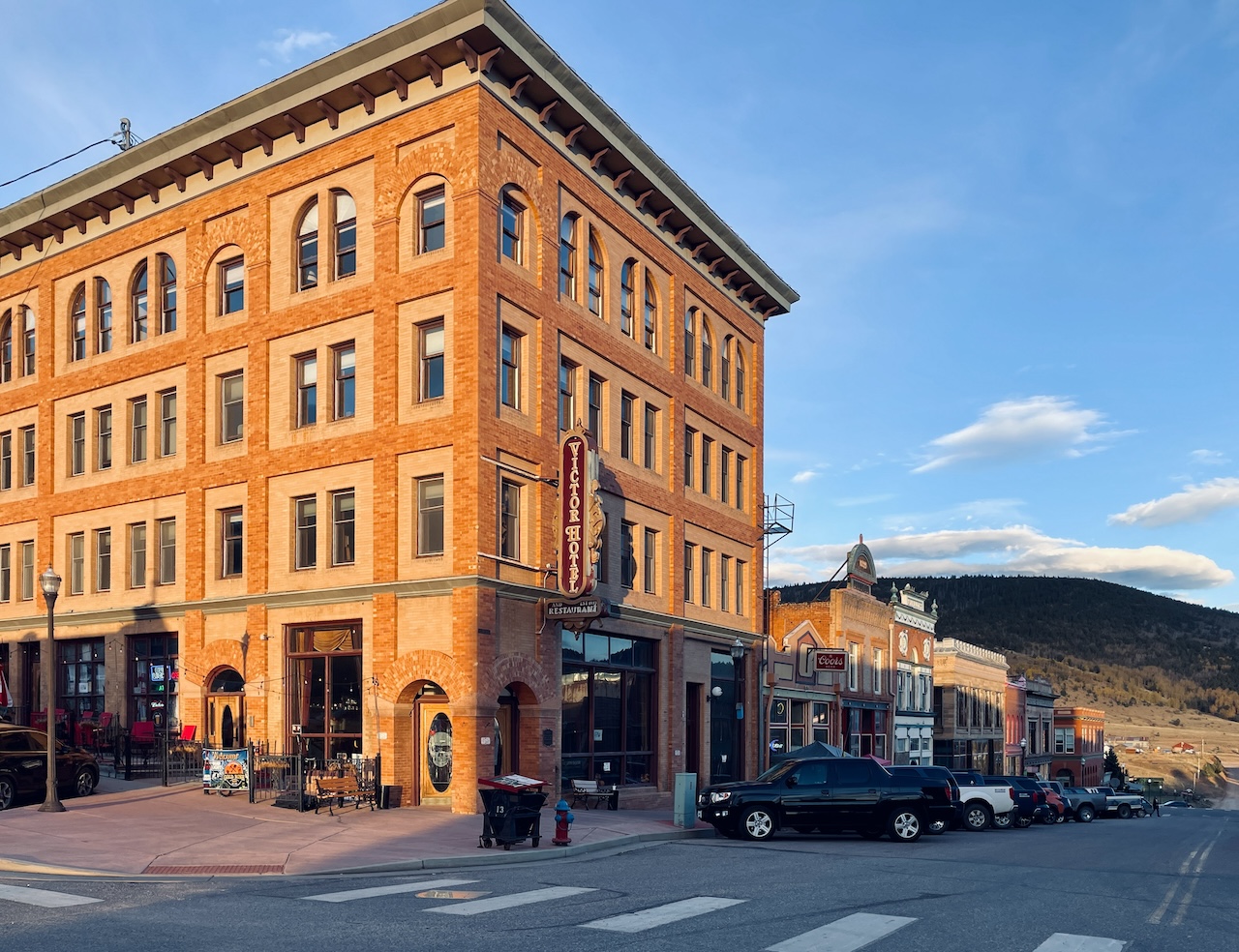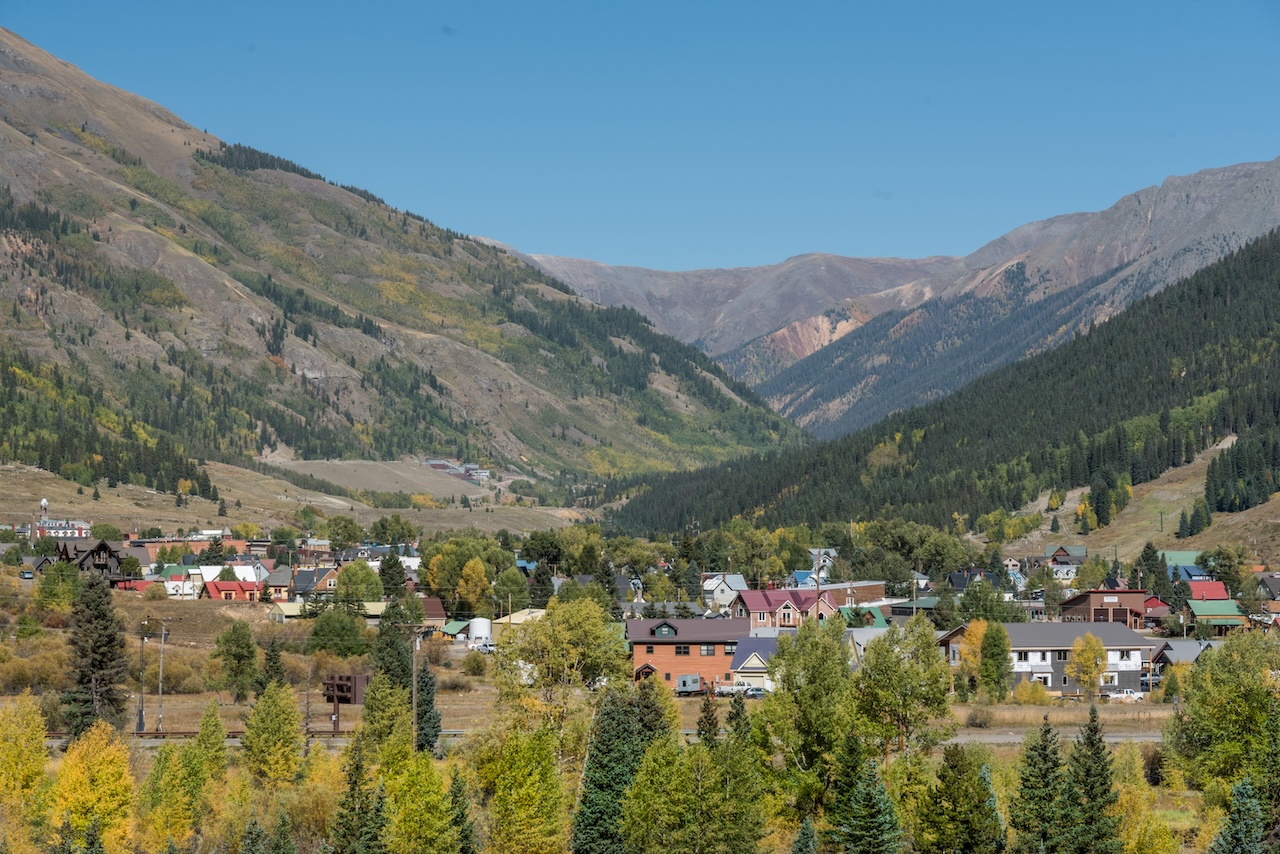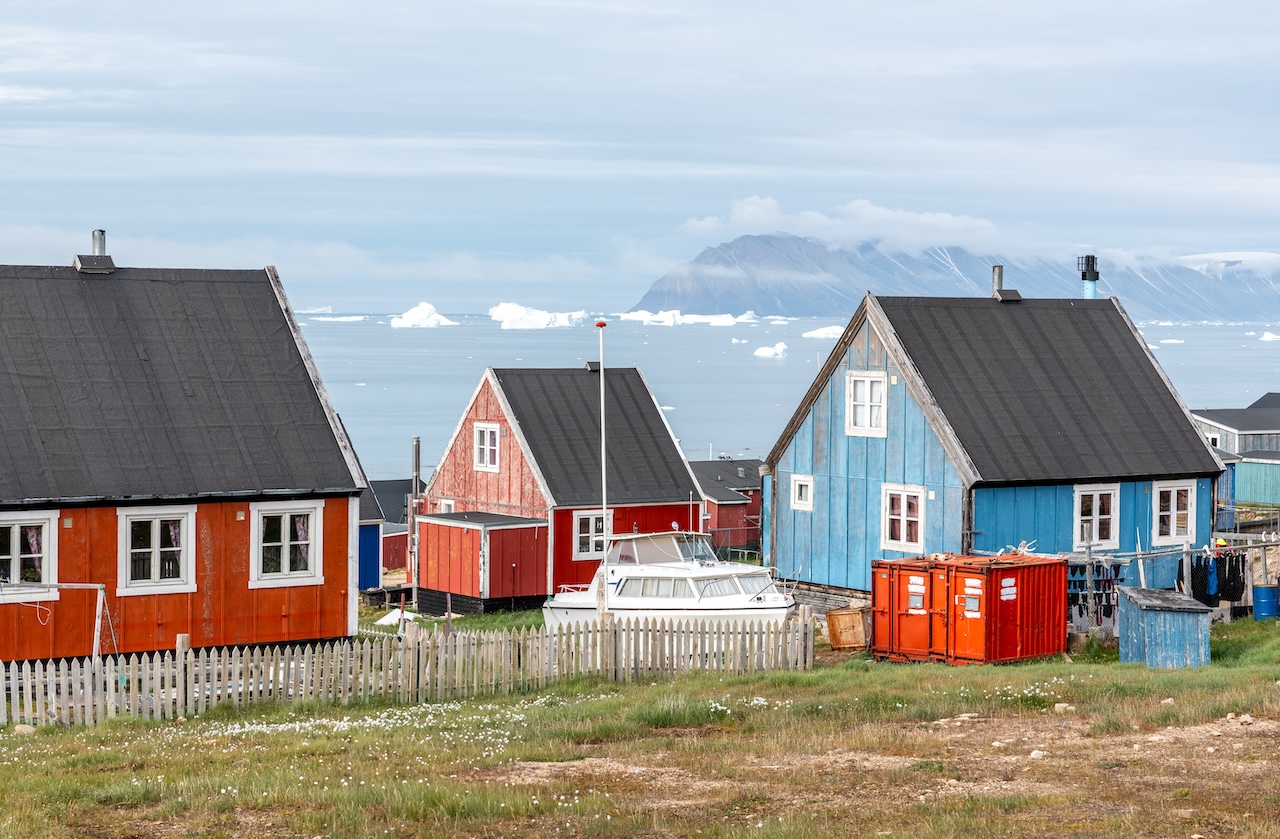
All About the Colorful Houses in Greenland
All about the colorful houses in Greenland: A look at the Arctic’s brightest tradition.
Step off the plane in Nuuk or sail to a tiny coastal village, and one of the first things you’ll notice about Greenland—beyond its expansive glaciers and dramatic landscape—is the splash of color that dots the shoreline. The colorful houses in Greenland are just as much a part of the scenic landscape as the icebergs and glaciers. Bright red houses perched along icy cliffs. Powder-blue buildings stand beside lemon-yellow homes. It’s a painter’s palette set against a striking backdrop of snow and stone.
For years, a photo of Greenland and its vibrant buildings has been front and center on my vision board, marking it as one of my dream travel destinations. There’s something undeniably joyful about a village of crayon-colored homes nestled beside an icy fjord in an otherwise stark terrain—a picture-perfect opportunity for me and my camera.
So, when I got the chance to take a cruise along Greenland’s coast with HX Expeditions, I chose to hop aboard their Mythical Lands of the North two-week Greenland cruise. This route begins in Nuuk and crosses into the far northern regions of the Arctic Circle, following Greenland’s western coast—the most populated part of the country, and where you’ll find most of the Inuit communities and the colorful buildings of Greenland.
Why are the houses in Greenland Different Colors?
The answer is part tradition, practicality, and storytelling. Visitors often make the misconception that the reason for the color-coded buildings was to add a bit of color and brightness to an otherwise monochromatic landscape, often seeped in dense fog. It began as a necessity for function. The tradition of painting buildings in bright, primary colors dates back to the 18th century, when Danish colonizers began establishing settlements on the island. At that time, color wasn’t about aesthetics—it was a practical way to quickly identify the purpose of a building in remote, often stormy conditions where signage was minimal and visibility was poor.



Each color had a meaning:
- Red buildings would indicate churches, schools, teachers’ and ministers’ homes, as well as trading posts.
- Yellow was assigned to hospitals, clinics, and doctors.
- Green signified telecommunication buildings or utilities.
- Blue buildings and houses often indicated fishermen’s homes or fishing factories.
- Black or dark hues were sometimes used for police stations or more official structures.
This color-coding system made navigation easier and helped settlers quickly find what they needed in isolated, treacherous terrain. It was a way to easily spot places in a country that is covered in ice and snow most of the year, and with heavy fogs and little visibility approaching the coastline.
Even though it’s the world’s largest island (that’s not a continent) at 836,330 square miles, roughly 80% of it is covered by an ice cap, leaving only 20% of the land inhabitable. The massive ice cap covers the central interior of the island, leaving (in the summer) an ice-free shoreline for settlements and towns. 57,000 Greenlanders live along the ice-free coastline, with nearly 35% of the population in the capital city of Nuuk. The remaining population is scattered throughout other small settlements and towns, and where you’ll see the Arctic’s brightest and most colorful tradition come to life.
Today, Greenland’s remote villages and even its most modern cities still uphold the coloring tradition, but the color codes are no longer strictly followed. It lives on more as a celebration of cultural identity than practicality. In a place where the Arctic winter can stretch for months with long, dark days, the bold colors bring a sense of warmth, individuality, and cheer to daily life. Greenlanders embrace these colors not just for their homes but for schools, offices, and churches. The vibrant hues contrast dramatically against the often grey-white landscape, serving as beacons of life in an otherwise stark environment.
The best places to see the colorful houses in Greenland
While any of the small towns in Greenland will have colorful buildings, there are several places that I found particularly stunning and easier to navigate.
Nuuk
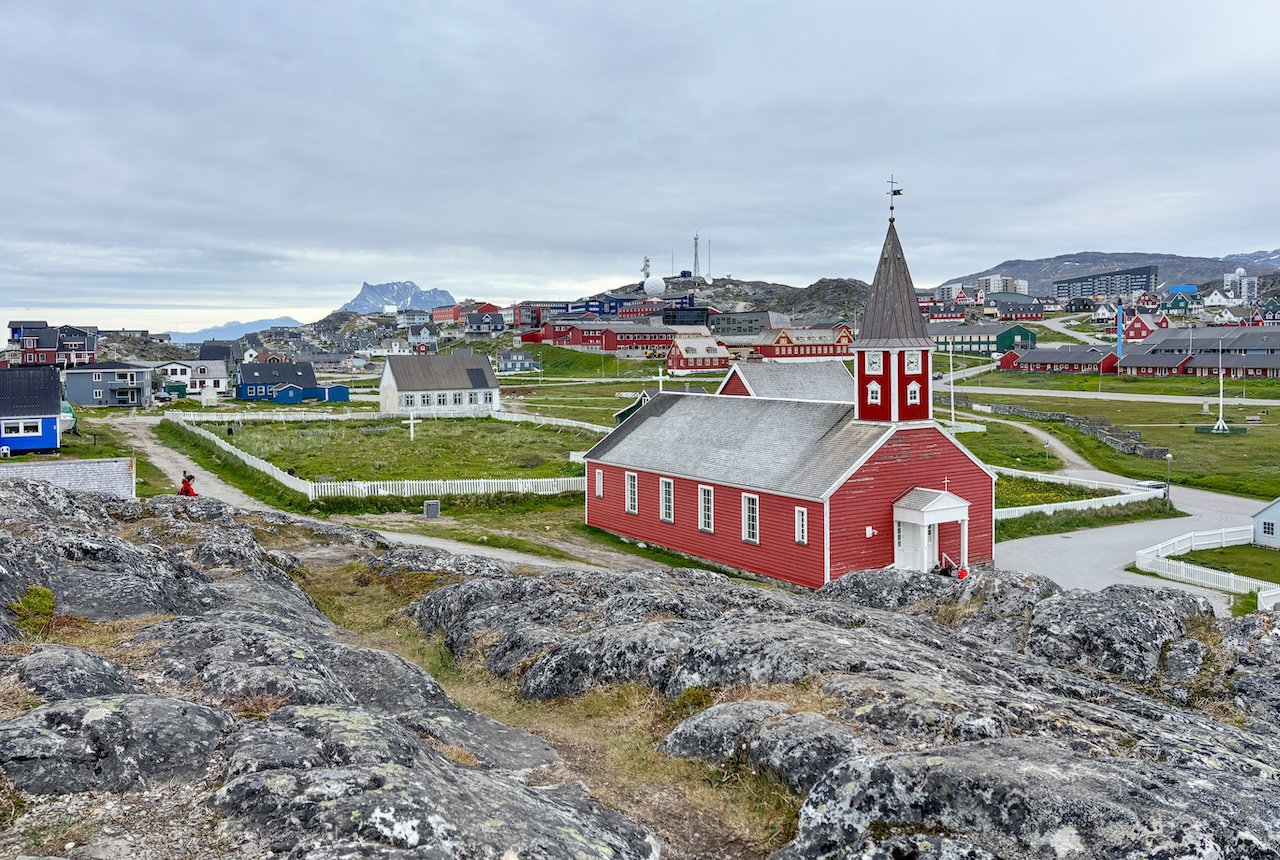
Nuuk, Greenland’s capital, is the country’s most populated city, offering the greatest concentration of colorful buildings. Throughout the city, you’ll find the best representation of historic and modern Greenland. Along its coastline rests the city’s historic district, where you can see some of the original colorful houses in Greenland, still painted in their traditional color-coded facade. As you get closer to the city’s center, more modern buildings and housing units embrace the colors, but in non-traditional ways.
Ilulissat – “city of icebergs”

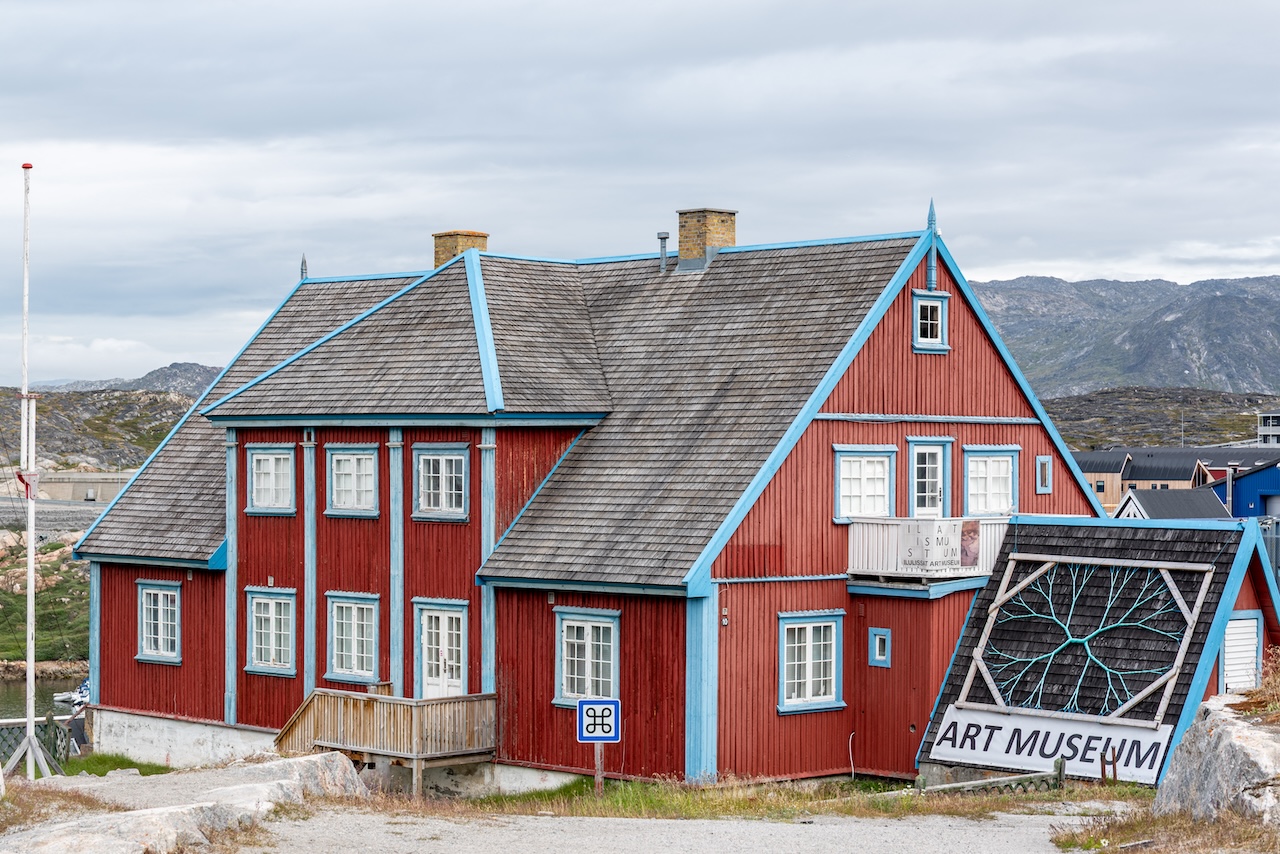
What would make seeing the colorful houses in Greenland even more spectacular? Adding large glaciers, fjords, and icebergs to the mix. Home to the UNESCO World Heritage Site—the Ilulissat Ice Fjord, Ilulissat offers the best of both worlds when it comes to the ultimate Greenlandic experience. While the icebergs here are the star of the show, the charming town has much to offer visitors, including a major cruise port in the summer months, restaurants, and modern hotel accommodations. In town, the art and history museums were my favorite buildings for a classic Greenlandic look and feel. Halibut Pier also provides picturesque pops of color that fill the hillside.
Itilleq
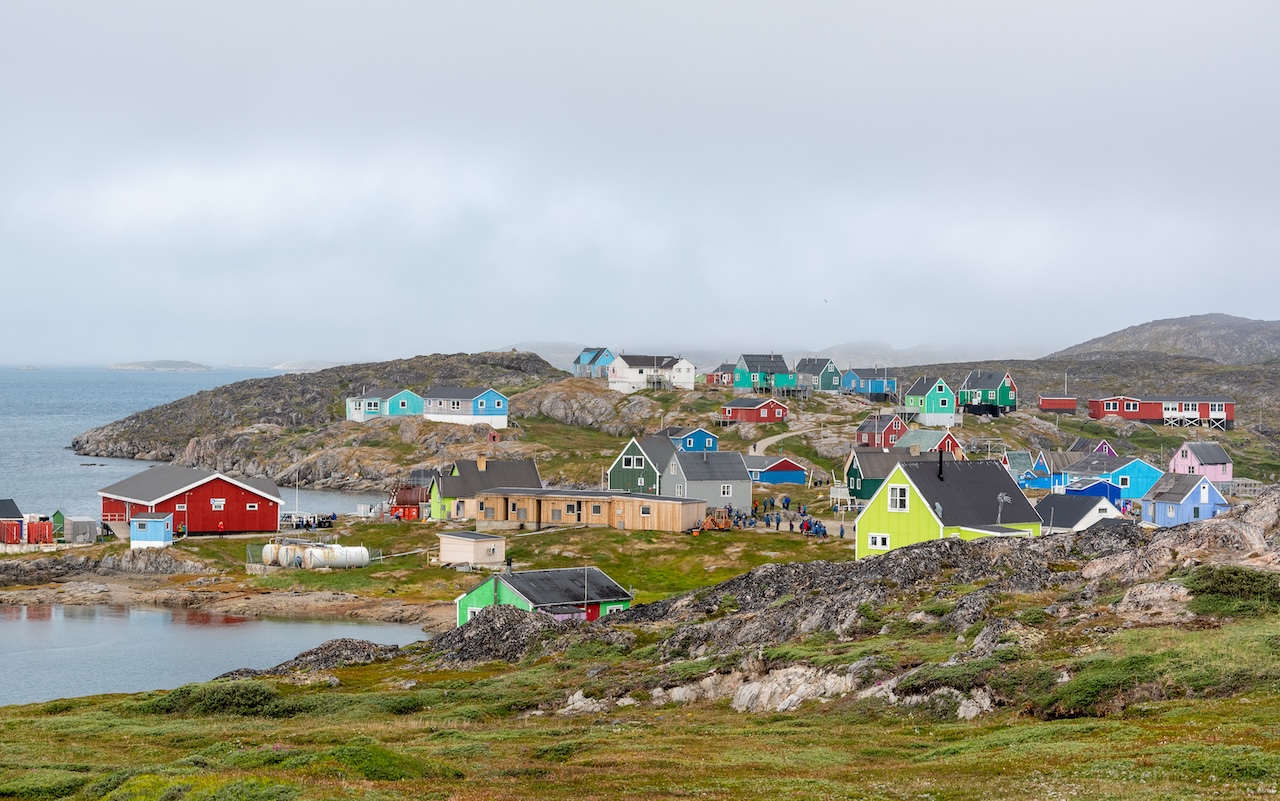
Itilleq is a tiny island, located just 1.2 miles north of the Arctic Circle, with roughly 100 inhabitants. It’s where you’ll find traditional hunting and fishing in everyday life in one of the world’s most remote landscapes. For the best views of this coastal town and to see the colorful houses of Greenland, walk to the graveyard that sits at the top of a hill. Here is where I also found the best selection of white arctic cotton flowers.
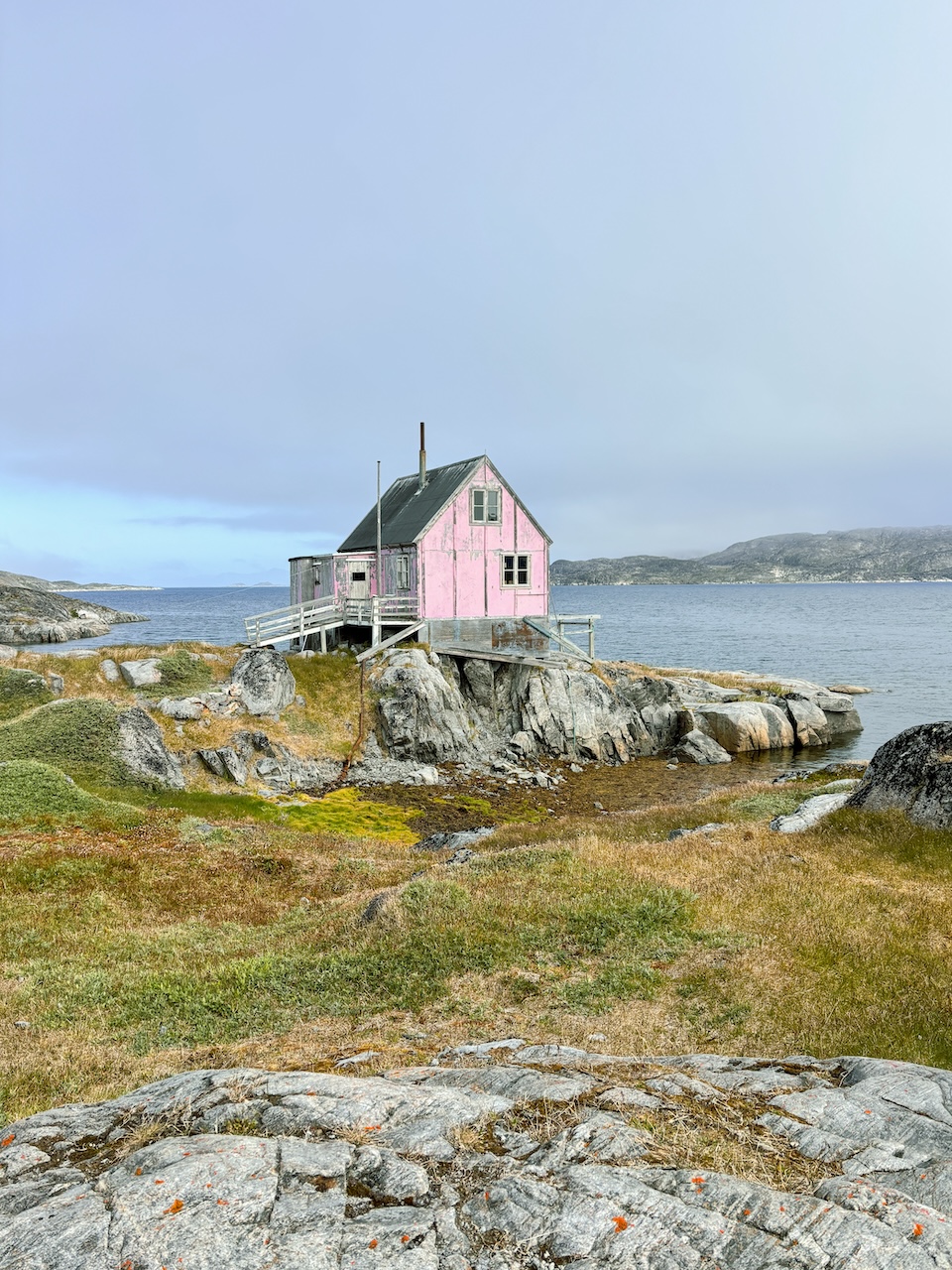
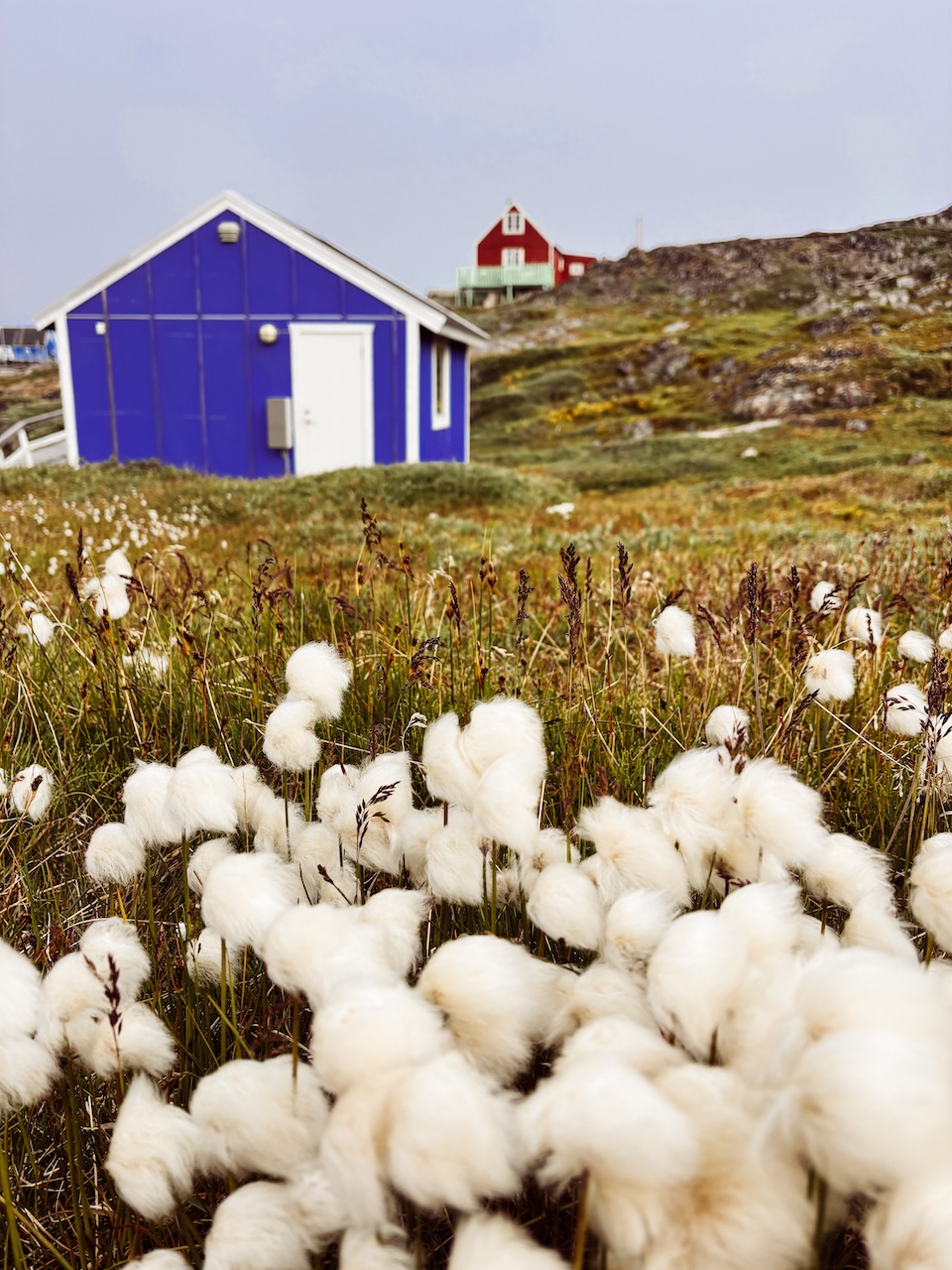
While there are many colorful buildings to see in Itilleq, I remember a pink house that sat on the rocky cliffs butted against the blue waters I absolutely loved photographing. As well as the church on the other side of town from the graveyard, it is quite picturesque, with the rocky coastline in the background.
Uummannaq
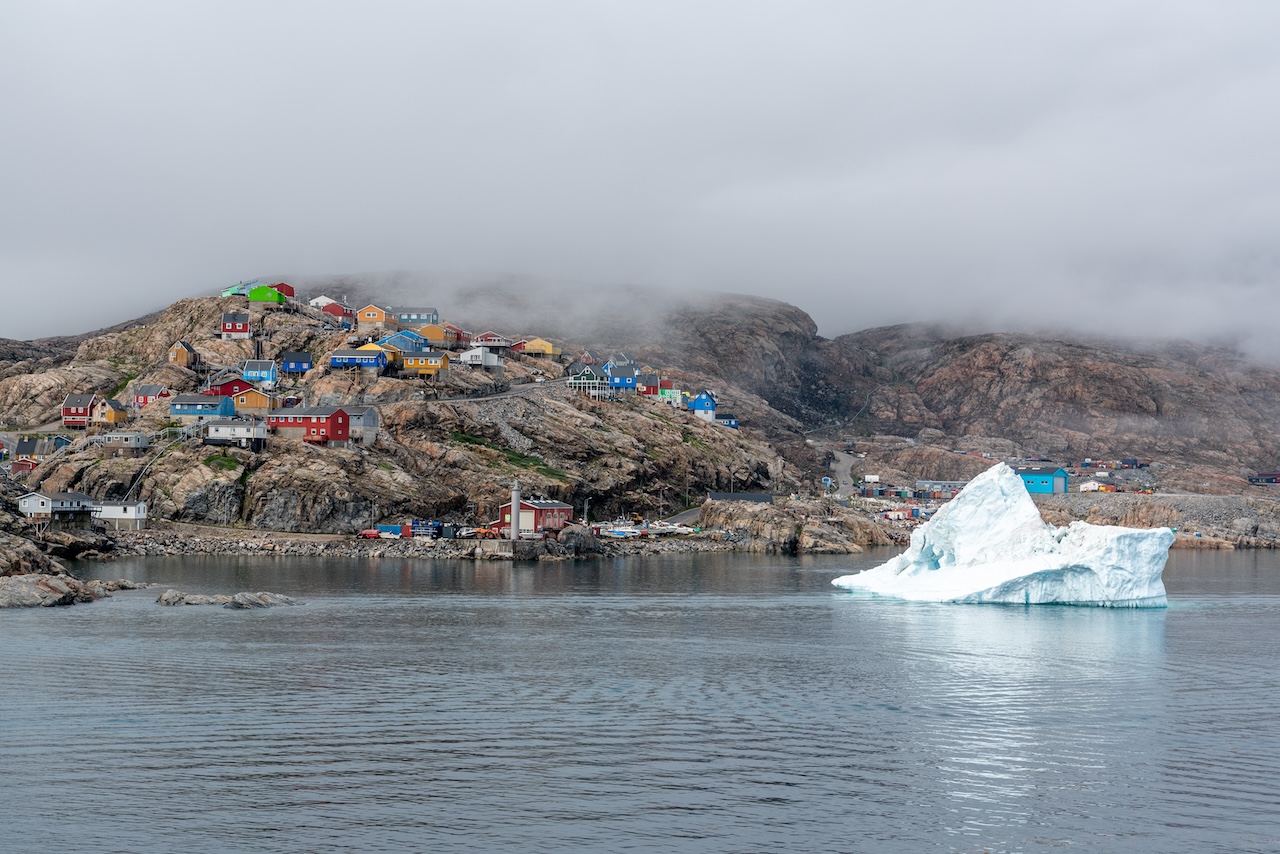
Continuing north, you’ll cross over the Arctic Circle, and in roughly 350 miles, you’ll reach the island of Uummannaq. Home to the most prominent mountain on the Arctic coast of Western Greenland and jaw-dropping icebergs that collect near the town’s shoreline, Uummannaq creates a dramatic backdrop for photographing the colorful houses in Greenland.
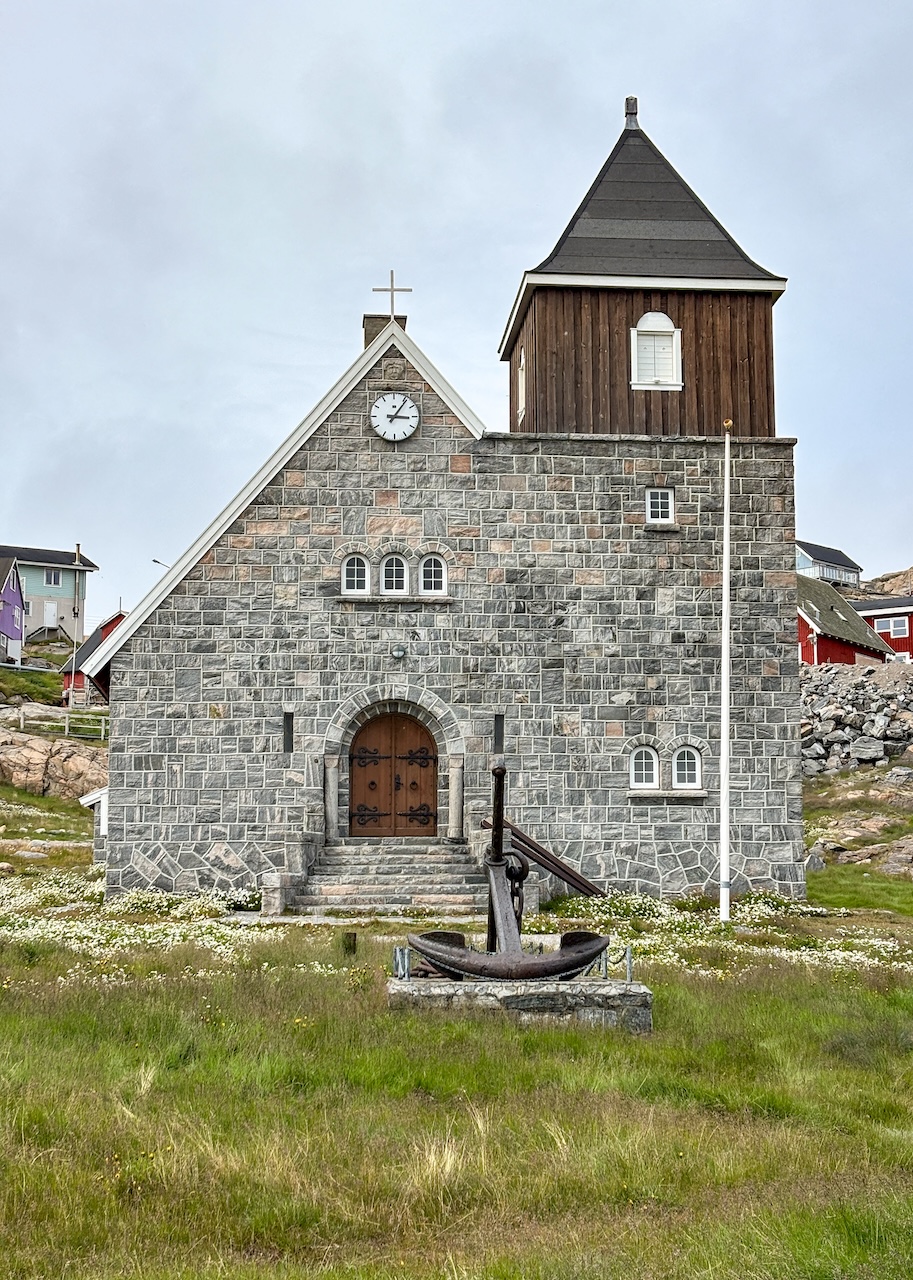
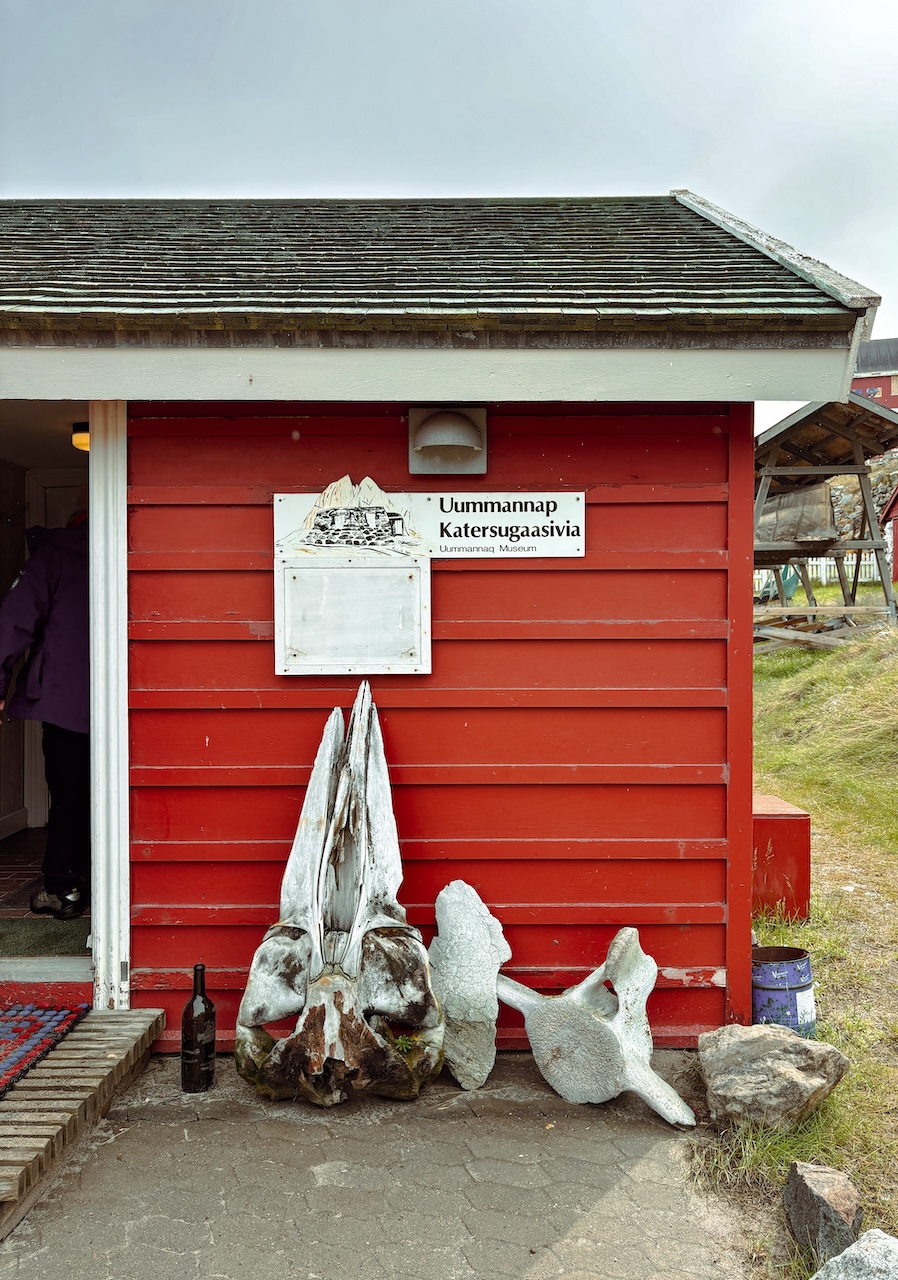

Despite its small size, the island is also home to several hiking trails. Known to be the birthplace of Santa Claus (an eternal debate between Greenland and Norway), you can take a hike through the rocky terrain to Santa’s Hut. In town, the history museum and the town’s central church offered camera candy for a classic Greenlandic landscape.
Qaanaaq
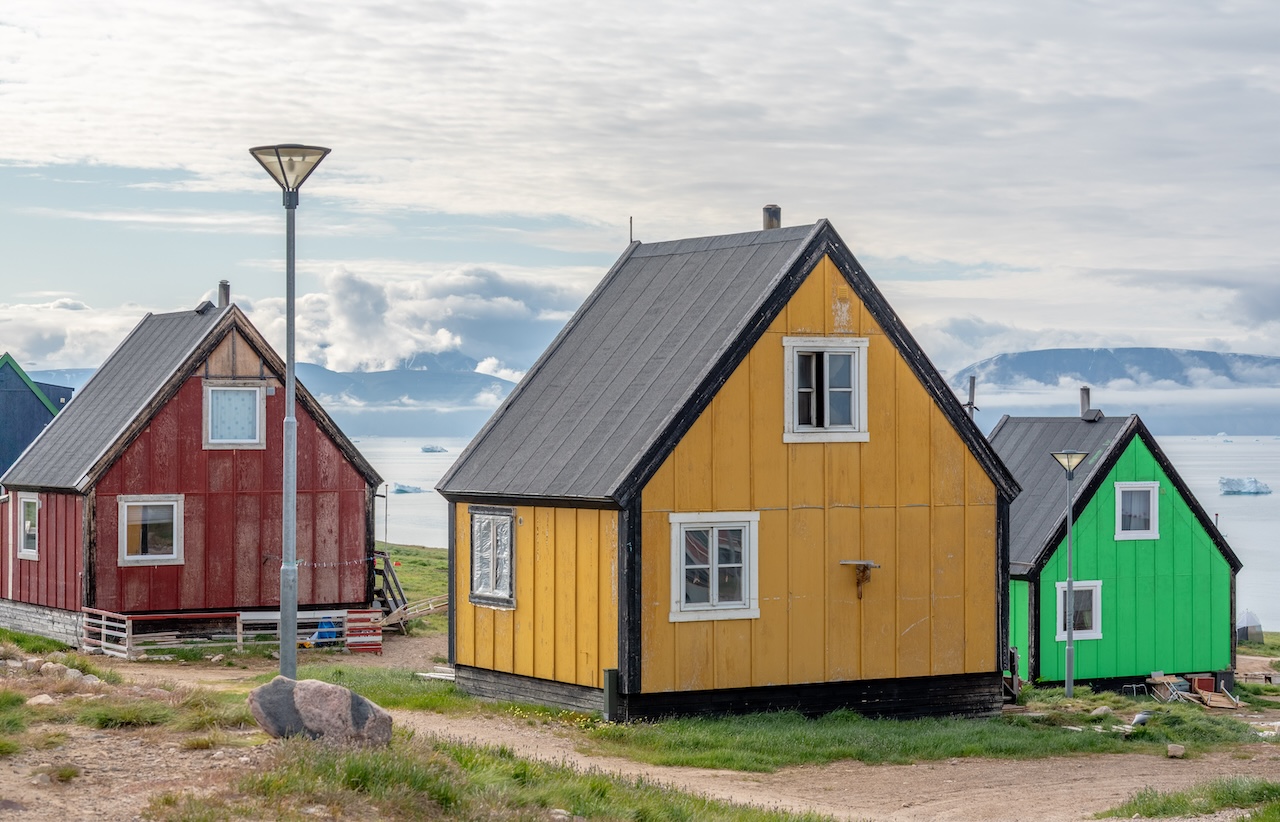
Qaanaaq is the northernmost town in north Greenland and is home to one of the larger communities with 600 inhabitants. Inhabitants here experience the most extreme weather, with the sun never rising above the horizon 3.5 months out of the year, known as Polar Darkness, and for five months out of the year, the sun never sets, known as the Midnight Sun.
Because of its larger community, you’ll find a police station painted in the traditional color of dark green. I found the Qaanaaq Museum to be one of the best museums in Greenland. Their well-maintained collection of Greenlandic history and culture spans from the tales of the famous American expeditioner who is said to be the first to “discover” the North Pole, to life and culture living in Greenland. The Qaanaaq Airport is the lifeline for locals and travelers in northern Greenland, providing direct flights from Nuuk. Unless you are cruising, air travel is your best bet for visiting this remote community.
Disko Bay & Qeqertarsuaq

Disko Island is the largest island off the coast of Greenland, with a rich history of whaling. Black sand beaches, volcanic rock formations, hot springs, and wildflowers fill the Island and the town of Qeqertarsuaq, making this one of the most diverse landscapes in Greenland. As one of the bigger settlements in Greenland, you’ll find paved roads, cars, and other modern amenities.

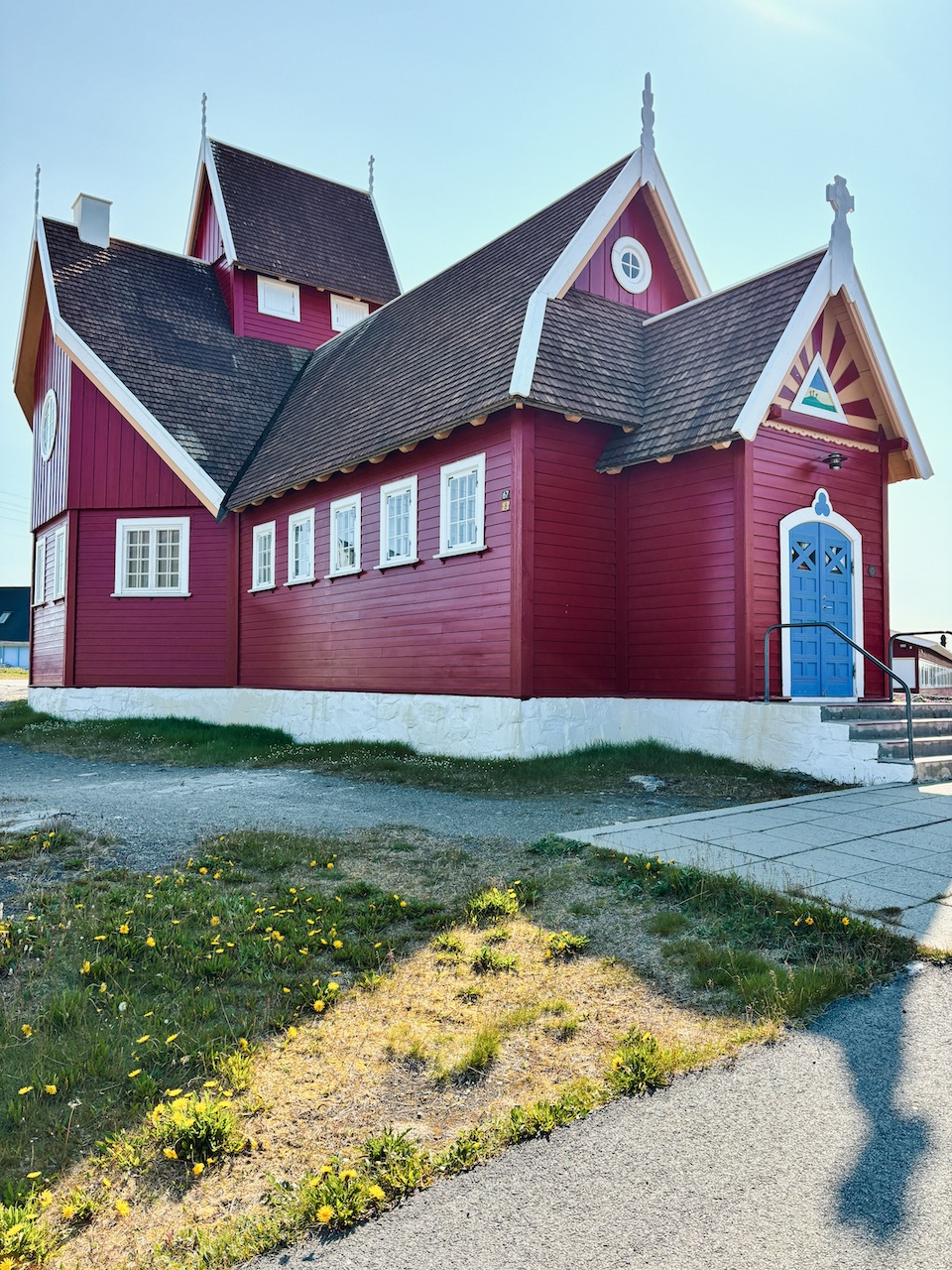
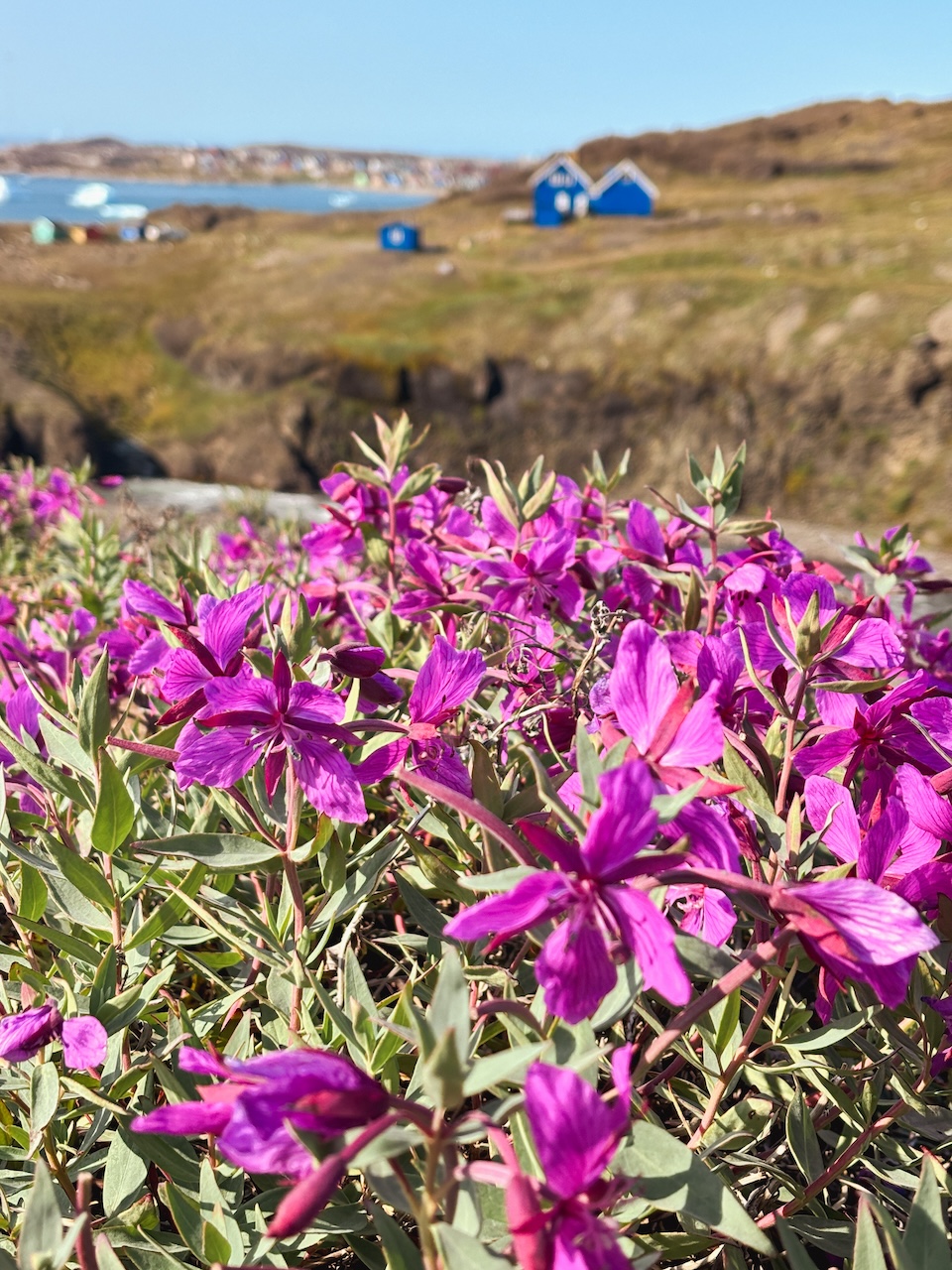
Part of what makes the island ideal for picture-perfect views of the colorful houses in Greenland is the wildflowers that bloom in summer. The island is home to 50% of the flowers found in Greenland, making it the most colorful place in Greenland. Iconic stops include the soccer field, the museum, the town church, and distant views of town hiking along the Basaltic Cliffs. From here, you can see the colorful buildings of Greenland filling in the coastline where giant icebergs float amongst the waters of Disko Bay—a beautiful convergence of mother nature and human nature.
How to see the colorful houses in Greenland
Getting around Greenland isn’t exactly easy. In fact, there are no roads connecting the towns, and the only way to visit these coastal villages is by ferry, cruise liner, or possibly air travel. No matter how you choose to get there, be respectful of the land and its people. Ask for permission to photograph and take with you only memories.
While Greenland’s icebergs and arctic wildlife are often the main attraction, the colorful houses of Greenland are also something to appreciate. They’re more than just pretty—they’re part of Greenland’s story, painted stroke by stroke through generations.


